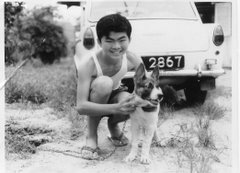When I was in secondary school, I started to enjoy listening to English pop songs on the radio. That would be in the 1960s. One day, a relative gave us a guitar and I learned to strum a few chords; and even bought song books with lyrics and guitar chords to practise.
One of my favourites songs at that time had this line in it:
“But the joys of love are fleeting, for Pierrot and Columbine.”
For years, I had been curious to know what this line meant; but never took the trouble to do the research. I guessed the singer was talking about her lovers in different places called Pierrot and Columbine. (I thought she had sung, “from Pierrot to Columbine”) It was not until recently that I decided to Google for it and discovered the real meaning of this phrase.
Thus it was in those early days, that we often could not hear clearly, and did not understand the meaning of some lyrics of the songs we liked. Another example was a song by a group called Gerry and the Pacemakers titled, Ferry Cross the Mersey. I did not understand at that time what or where this ‘mercy’ was. Thanks to the popularity of English football clubs like Liverpool, I later knew what this ‘mercy’ meant.
With instant knowledge literally at their fingertips, today’s teenagers do not face such a problem. Which brings me to the real aim of my essay; to marvel at how much the world has changed; and how the information age has changed our lives, making obsolete some icons of our teenage years. Two recent pieces of news brought that point home powerfully. One, the demise of Kodak; and two, the news that Encyclopaedia Britannica (I used to be quite proud that I could spell this word without having to consult the dictionary) would cease to be printed.
By now you must be quite curious - some of the younger readers at least - what is the song I was referring. No need to Google for it. You have YouTube to thank for that.
Seiso is Cleaning (1) – The Importance of Seiso
-
The third ‘S’ in 5S is *Seiso*; and it simply means *Cleaning*.
*Example 1: Our beloved AR-15*
Many of us who have gone through NS (National Service) will ...




.jpg)
.JPG)
.JPG)







